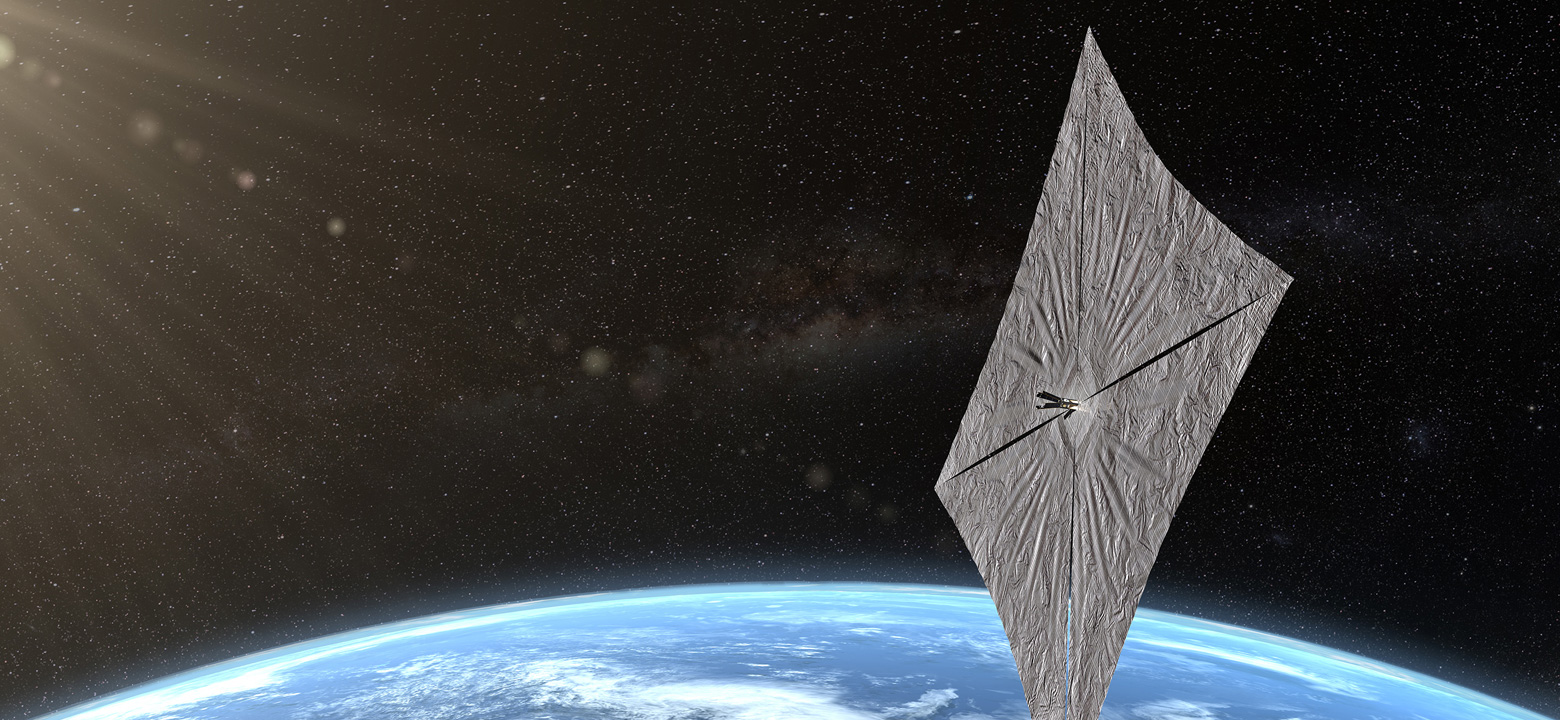
Can you sail on nothing but sunbeams? This is one of the questions that the LightSail 2 project sought to answer—and, so far, it seems to have gotten a resounding yes. What does this mean, and what does it spell for future projects of its kind?
LightSail 2 is a lightweight spacecraft put forth by The Planetary Society. As part of their initiative to create more affordable forms of space exploration, The Planetary Society created and obtained crowd funding for a small craft that could, theoretically utilize photons as a means of propulsion through the use of a mylar solar sail.
Most spacecraft currently rely on engines that require expensive fuel, which isn't the best or most efficient option in a nearly gasless vacuum. With LightSail 2, scientists sought to find out if the force of photons alone could be enough to help propel a spacecraft. LightSail 2—about the size of a loaf of bread, outfitted with 344 square feet of thin mylar sails—is designed to allow photons to strike and bounce off of it. While these particles are only capable of generating a tiny amount of force, the fact that they strike constantly coupled with the lack of air resistance in space means that this force adds up to enough to move a lightweight craft without requiring fuel.
LightSail 2 launched on the 25th of June, 2019, and deployed its mylar sail on the 23rd of July. By July 31st, The Planetary Society announced the success of their mission—the craft moved to a higher orbital altitude under nothing but the power of sunlight.
After deploying its sail, mission managers altered the craft's orientation remotely, allowing the craft to begin raising its orbital high point. By the 27th of July, the craft's apogee had raised to roughly 1.2 miles. With no other means of propulsion, it is assumed that the tiny push from billions of individual photons has moved LightSail 2. As LightSail 2's orbital apogee raises, its orbit is growing more elliptical in shape. This means that the opposite side of the craft's orbit is getting closer and closer to Earth. While there isn't much air resistance outside of Earth's atmosphere, there significantly more drag within it. This drag will eventually pull the craft back down to the ground, in a year or so.
The Planetary Society's aim is to help reduce the cost of space exploration, and LightSail 2 is an excellent start. While this loaf-sized craft is a far cry from a manned station, this mission's success is still a victory for affordable spaceflight. Instead of using engines that must fight the lack of air resistance, LightSail 2 takes advantage of it. Rather than finding ways to balance fuel weight and storage with other needs, LightSail 2 doesn't require any fuel. This technology may present a way to propel exploratory probes through the galaxy in the future. Since it is not limited by fuel, photon sailing can allow small spacecrafts to travel anywhere sunlight reaches.
LightSail 2 is the first spacecraft in Earth's orbit propelled using only photons. The success of this mission opens up tremendous new possibilities for exploration. Without the limitations of fuel storage, management, and handling, spacecrafts could carry more scientific equipment or cargo, greatly expanding our experimental capabilities. With LightSail 2's mirrorlike sails, we may soon be able to explore more of our solar system than we ever thought possible.